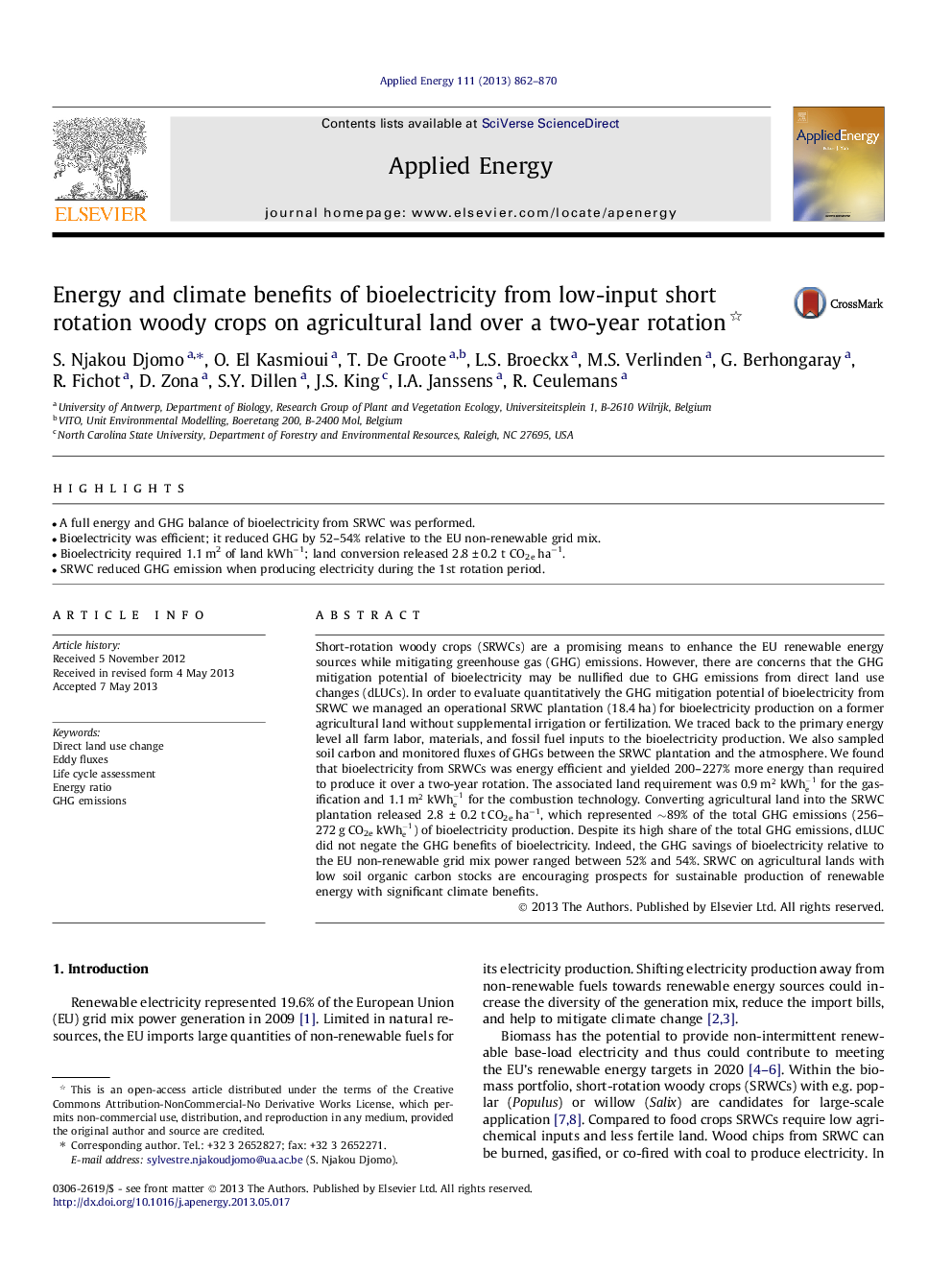| Article ID | Journal | Published Year | Pages | File Type |
|---|---|---|---|---|
| 6692559 | Applied Energy | 2013 | 9 Pages |
Abstract
Short-rotation woody crops (SRWCs) are a promising means to enhance the EU renewable energy sources while mitigating greenhouse gas (GHG) emissions. However, there are concerns that the GHG mitigation potential of bioelectricity may be nullified due to GHG emissions from direct land use changes (dLUCs). In order to evaluate quantitatively the GHG mitigation potential of bioelectricity from SRWC we managed an operational SRWC plantation (18.4 ha) for bioelectricity production on a former agricultural land without supplemental irrigation or fertilization. We traced back to the primary energy level all farm labor, materials, and fossil fuel inputs to the bioelectricity production. We also sampled soil carbon and monitored fluxes of GHGs between the SRWC plantation and the atmosphere. We found that bioelectricity from SRWCs was energy efficient and yielded 200-227% more energy than required to produce it over a two-year rotation. The associated land requirement was 0.9 m2kWhe-1 for the gasification and 1.1 m2kWhe-1 for the combustion technology. Converting agricultural land into the SRWC plantation released 2.8 ± 0.2 t CO2e haâ1, which represented â¼89% of the total GHG emissions (256-272 g CO2e kWhe-1) of bioelectricity production. Despite its high share of the total GHG emissions, dLUC did not negate the GHG benefits of bioelectricity. Indeed, the GHG savings of bioelectricity relative to the EU non-renewable grid mix power ranged between 52% and 54%. SRWC on agricultural lands with low soil organic carbon stocks are encouraging prospects for sustainable production of renewable energy with significant climate benefits.
Related Topics
Physical Sciences and Engineering
Energy
Energy Engineering and Power Technology
Authors
S. Njakou Djomo, O. El Kasmioui, T. De Groote, L.S. Broeckx, M.S. Verlinden, G. Berhongaray, R. Fichot, D. Zona, S.Y. Dillen, J.S. King, I.A. Janssens, R. Ceulemans,
